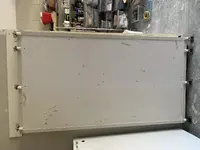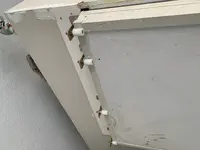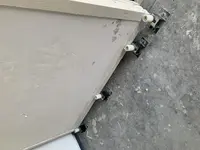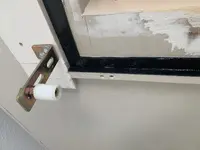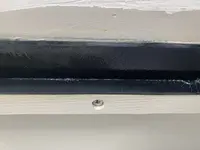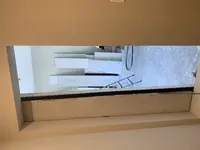E
Ekimtoor1
Member
My room build got to the point where I could actually start testing. The initial results are disappointing, but fixable I think.
Originally I installed a window AC up on one wall which was inexpensive at $180 and did a great job of cooling the room. But in my tests it was clearly leaking a LOT. Not sure what I was thinking as it is plain to me now that a window AC can never be adequately sealed. Fortunately, I was able to return it.
My next attempt will be using a portable AC which has a single 6” exhaust duct and I think I’ll have a lot more control over that. I’m thinking about how to line the duct with MLV and I can envision a baffle device on the outside wall, also constructed of MLV. I’m not expecting perfection, but it will certainly be quieter than the window unit.
If that fails, then I’m onto a mini split which is very expensive compared to these other options. But if that’s what it takes…
The other disappointment is the door. My door is a wall section on wheels constructed just like the structure - 5/8”-green glue-5/8”-2x4 framing filled with rock wool-5/8”-green glue-5/8”. The walls are nearly soundproof and therefore so is the door. But the seal on the door is not good. I installed 2” wide strips of 1/8” MLV on the edges of the door and mating strips on the face of the structure. There are gaps of about 1/32” in different places and it is remarkable how much those gaps leak.
I have a couple of ideas of how to fix the door. One is to install hardware that would pull the door seals tight and eliminate the gaps. The other is a 6-8” “plug” for the inside of the opening (about 34”x60”) made of some sort of foam with the right properties.
Comments appreciated!
Originally I installed a window AC up on one wall which was inexpensive at $180 and did a great job of cooling the room. But in my tests it was clearly leaking a LOT. Not sure what I was thinking as it is plain to me now that a window AC can never be adequately sealed. Fortunately, I was able to return it.
My next attempt will be using a portable AC which has a single 6” exhaust duct and I think I’ll have a lot more control over that. I’m thinking about how to line the duct with MLV and I can envision a baffle device on the outside wall, also constructed of MLV. I’m not expecting perfection, but it will certainly be quieter than the window unit.
If that fails, then I’m onto a mini split which is very expensive compared to these other options. But if that’s what it takes…
The other disappointment is the door. My door is a wall section on wheels constructed just like the structure - 5/8”-green glue-5/8”-2x4 framing filled with rock wool-5/8”-green glue-5/8”. The walls are nearly soundproof and therefore so is the door. But the seal on the door is not good. I installed 2” wide strips of 1/8” MLV on the edges of the door and mating strips on the face of the structure. There are gaps of about 1/32” in different places and it is remarkable how much those gaps leak.
I have a couple of ideas of how to fix the door. One is to install hardware that would pull the door seals tight and eliminate the gaps. The other is a 6-8” “plug” for the inside of the opening (about 34”x60”) made of some sort of foam with the right properties.
Comments appreciated!

